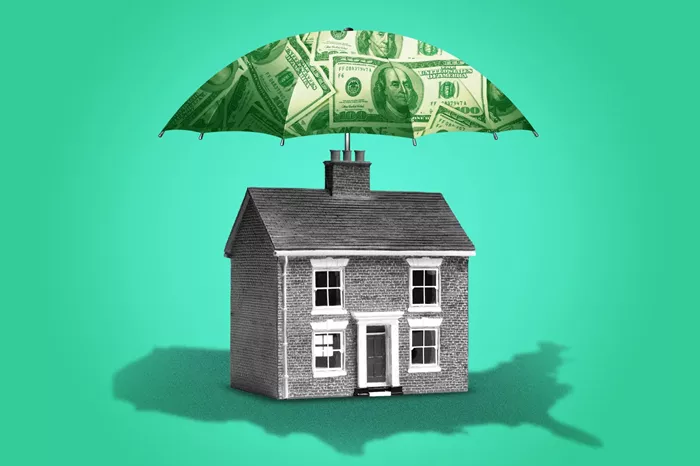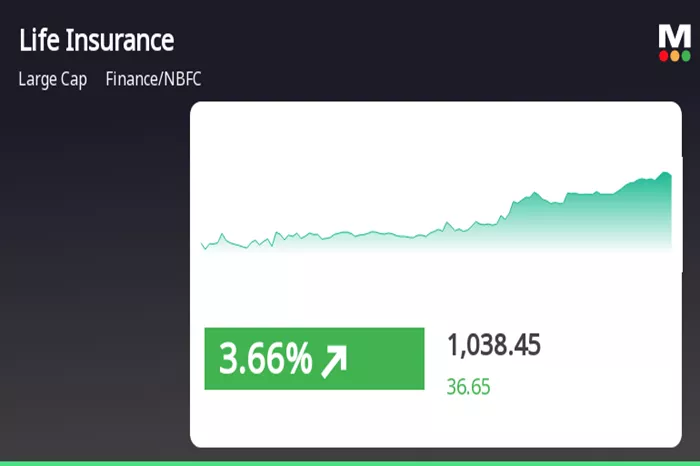When planning for the financial protection of your home, one key question often arises: “How much should I expect to pay for it?” The cost of homeowners insurance can vary widely based on numerous factors, and understanding these can help you estimate your premiums more accurately. This comprehensive guide will explore the various elements that influence homeowners insurance costs, providing you with valuable insights into managing and potentially reducing your premiums.
Understanding Homeowners Insurance
What Is Homeowners Insurance?
Homeowners insurance is a policy designed to protect your home and personal belongings from financial loss due to covered events. It also provides liability protection in case of accidents or damages on your property. The primary components of homeowners insurance include:
Coverage for the Structure: This protects against damage from events such as fire, windstorms, vandalism, and other covered perils.
Personal Property Coverage: This covers the loss or damage of personal belongings like furniture, electronics, and clothing.
Liability Protection: Provides financial protection if someone is injured on your property or if you are held responsible for damages to someone else’s property.
Additional Living Expenses: Covers the cost of temporary living arrangements if your home is rendered uninhabitable due to a covered event.
Factors Affecting Homeowners Insurance Costs
The cost of homeowners insurance is influenced by various factors. Understanding these can help you better estimate and manage your insurance premiums.
Location
The location of your home is a significant factor in determining your insurance premium.
Risk of Natural Disasters: Homes located in areas prone to natural disasters such as hurricanes, floods, earthquakes, or tornadoes often face higher premiums due to the increased risk of damage.
Crime Rate: Areas with higher crime rates may have elevated premiums because of the increased risk of theft or vandalism.
Proximity to Fire Services: Homes situated near fire stations or with access to good fire-fighting services may benefit from lower premiums as the risk of fire damage is reduced.
Home Characteristics
The specific characteristics of your home also play a crucial role in determining your insurance costs.
Age of the Home: Older homes may have higher premiums due to the increased likelihood of maintenance issues and higher repair costs.
Construction Type: Homes constructed with fire-resistant materials or updated with modern building codes may have lower premiums compared to homes built with more flammable materials.
Roof Condition: A newer or well-maintained roof reduces the risk of damage from weather-related events, potentially leading to lower premiums.
Home Size and Value: Larger homes or those with a higher value may require more coverage and thus result in higher premiums.
Coverage Amount and Deductibles
The amount of coverage you select and the size of your deductible can significantly affect your insurance premiums.
Coverage Amount: Higher coverage limits, which offer more protection for your home and belongings, generally lead to higher premiums. It is important to select coverage that adequately reflects the value of your home and possessions.
Deductibles: Choosing a higher deductible can reduce your premium. However, you will need to pay more out-of-pocket in the event of a claim, so it’s crucial to select a deductible amount that is manageable for you.
Home Safety Features
Safety features and home improvements can impact your insurance rates.
Security Systems: Homes equipped with security systems, including alarms, surveillance cameras, and motion detectors, may qualify for lower premiums due to the reduced risk of burglary and damage.
Fire Prevention Measures: Installing smoke detectors, fire extinguishers, and sprinkler systems can lead to lower premiums by reducing the risk of fire damage.
Updated Electrical and Plumbing Systems: Modern and well-maintained electrical and plumbing systems can lower premiums by reducing the risk of issues such as electrical fires or water damage.
Insurance Company and Policy Type
Different insurance companies offer varying rates and policy types, which can affect your premiums.
Insurance Provider: Each insurance company has its pricing model and may weigh different risk factors differently. Comparing quotes from multiple providers can help you find the best rate.
Policy Type: Various types of homeowners insurance policies, such as HO-1, HO-2, HO-3, and HO-5, offer different levels of coverage. More comprehensive policies generally come with higher premiums but provide broader protection.
Estimating Homeowners Insurance Costs
Average Costs
On average, homeowners insurance costs range from $800 to $1,500 per year, but this can vary significantly based on location, home characteristics, and coverage levels. Here are some averages by type:
Basic Policies: HO-1 and HO-2 policies, which offer limited coverage, generally have lower premiums compared to more comprehensive policies.
Standard Policies: HO-3 policies, which are the most common, offer broad coverage and typically fall within the average range.
Comprehensive Policies: HO-5 policies provide the most extensive coverage and tend to have higher premiums.
Cost by State
Insurance costs can vary greatly depending on the state in which you live. Factors influencing state-based costs include:
High-Risk States: States prone to natural disasters, such as Florida and California, may have higher premiums due to the increased risk of damage.
Low-Risk States: States with fewer natural disasters and lower crime rates often have more affordable insurance premiums.
See Also: Does Credit Score Affect Home Insurance Rates?
Ways to Lower Your Homeowners Insurance Premium
Shop Around
Comparing quotes from multiple insurance providers can help you find the best rate for your needs. Each company has different pricing structures and discounts.
Bundle Insurance Policies
Many insurers offer discounts if you bundle your homeowners insurance with other policies, such as auto or life insurance. This can result in significant savings.
Increase Your Deductible
Opting for a higher deductible can lower your premium. Ensure that you can afford the deductible amount in case of a claim.
Improve Home Safety
Investing in safety features such as security systems, fire alarms, and modern plumbing can lead to lower premiums by reducing the risk of damage and theft.
Review and Adjust Coverage
Regularly review your homeowners insurance policy to ensure it meets your current needs. Adjust your coverage to avoid over-insurance or under-insurance, which can help manage costs effectively.
Seek Discounts
Inquire about available discounts such as multi-policy, claim-free, or loyalty discounts. Many insurers offer reductions for various factors that may apply to you.
Conclusion
In conclusion, understanding how much you should expect to pay for homeowners insurance involves considering various factors including location, home characteristics, coverage amounts, and safety features. By evaluating these elements and exploring strategies to reduce costs, you can better manage your homeowners insurance premiums while ensuring adequate protection for your home. Regularly reviewing your policy and making informed adjustments can help keep your insurance costs in check and provide peace of mind for your property and belongings.
FAQs
1. How is homeowners insurance calculated?
Homeowners insurance premiums are calculated based on a range of factors including the value of the home, its location, and the level of coverage required. Insurance companies assess the risk associated with insuring a property, considering factors such as the likelihood of natural disasters, crime rates, and proximity to emergency services. The age and condition of the home also play a significant role, as older or poorly maintained homes may present higher risks. Additionally, the chosen deductible and any safety features or security systems installed can influence the premium. Insurance companies use complex algorithms and underwriting guidelines to determine the final premium amount. Regularly reviewing and updating your policy can help ensure that your coverage and premium remain appropriate for your needs.
2. What factors can I control to lower my homeowners insurance premium?
To lower your homeowners insurance premium, consider implementing several key strategies. First, improving your home’s safety with security systems, smoke detectors, and fire alarms can reduce your risk profile and result in lower premiums. Increasing your deductible can also help lower your premium, but ensure that you can afford the higher out-of-pocket expense if you need to file a claim. Bundling your homeowners insurance with other policies, such as auto insurance, can lead to discounts. Regular maintenance and updates to your home, such as a new roof or updated electrical systems, can also positively impact your insurance costs. Lastly, shopping around and comparing quotes from different insurance providers can help you find the most competitive rates.
3. How often should I review my homeowners insurance policy?
It is advisable to review your homeowners insurance policy annually or whenever there are significant changes to your home or circumstances. Regular reviews ensure that your coverage remains adequate as your property’s value and your personal needs evolve. Major life events, such as home renovations, significant purchases, or changes in household members, may necessitate adjustments to your policy. Additionally, reviewing your policy can help you identify any potential discounts or changes in coverage options that could affect your premium. Keeping your policy updated helps ensure that you are not over-insured or under-insured. A periodic review can also provide peace of mind knowing that you have the appropriate protection for your home and belongings.
4. What should I do if I disagree with my homeowners insurance premium?
If you disagree with your homeowners insurance premium, the first step is to contact your insurance provider to discuss your concerns. Request a detailed explanation of how your premium was calculated and review the factors influencing the cost. You may be able to provide additional information or correct any inaccuracies that could be affecting your premium. If after discussing with your insurer you are still dissatisfied, consider shopping around for quotes from other insurance providers. Comparing different policies and rates can give you a clearer picture of the market and help you find a more competitive premium. Additionally, you might seek advice from an insurance broker who can assist you in finding a policy that better suits your needs and budget.
5. What should I do if I need to file a homeowners insurance claim?
If you need to file a homeowners insurance claim, start by documenting the damage or loss thoroughly. Take photographs and make a detailed list of the affected items or areas. Contact your insurance provider as soon as possible to report the claim and follow their instructions on the claims process. An adjuster may be assigned to assess the damage and determine the amount of compensation you are eligible for. Keep records of all communications with your insurer and maintain copies of any documents related to the claim. Finally, be prepared to provide any additional information or evidence requested by your insurance company to support your claim and ensure a smooth process.






















